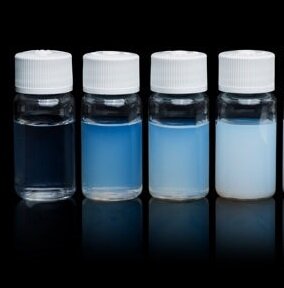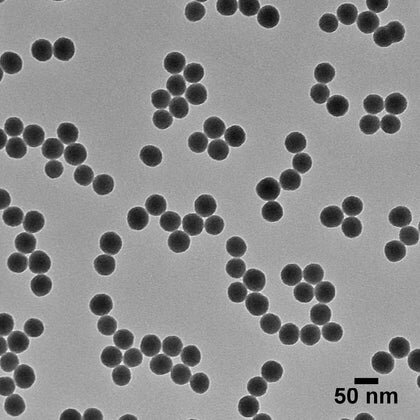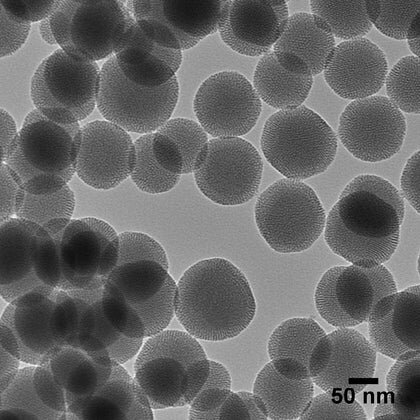Silica Nanoparticles
Silica nanoparticles combine biocompatibility, unique optical properties, and versatile surface functionalization capabilities. These nanoparticles are useful in a broad range of applications from nanomedicine including, targeted drug delivery, DNA/RNA extraction, particle size references, and more. Solid (amorphous) silica nanoparticles are available in a wide range of sizes and have readily modified surface chemistries to suit various applications. Mesoporous silica nanoparticles have nanometer-scale pores that make them useful in drug loading and targeted delivery applications.
We provide high-purity, monodisperse silica nanoparticles in varying sizes, shapes, and surface modifications. All products are supplied with a batch-specific Certificate of Analysis including characterization data such as TEM, DLS, Zeta, and UV-Vis as appropriate to the material.
Contact us for custom formulations, cGMP manufacturing in our ISO 13485 certified facility, or click below for bulk supply requests.

Why Purchase From Us?
Aggregation-free nanoparticles. Successful processes start with quality reagents – our processes allow us to provide high-quality, monodisperse nanoparticles.
Extensive characterization data. Experience the peace of mind of knowing exactly what you are purchasing for your application.
Exceptional customer service. Whether you need help with your order or integrating our particles into your application, our experts are here to help solve any issues in a professional and timely manner.

